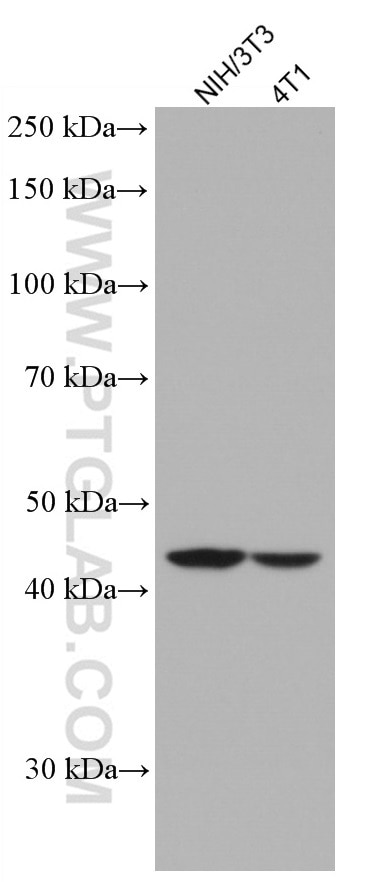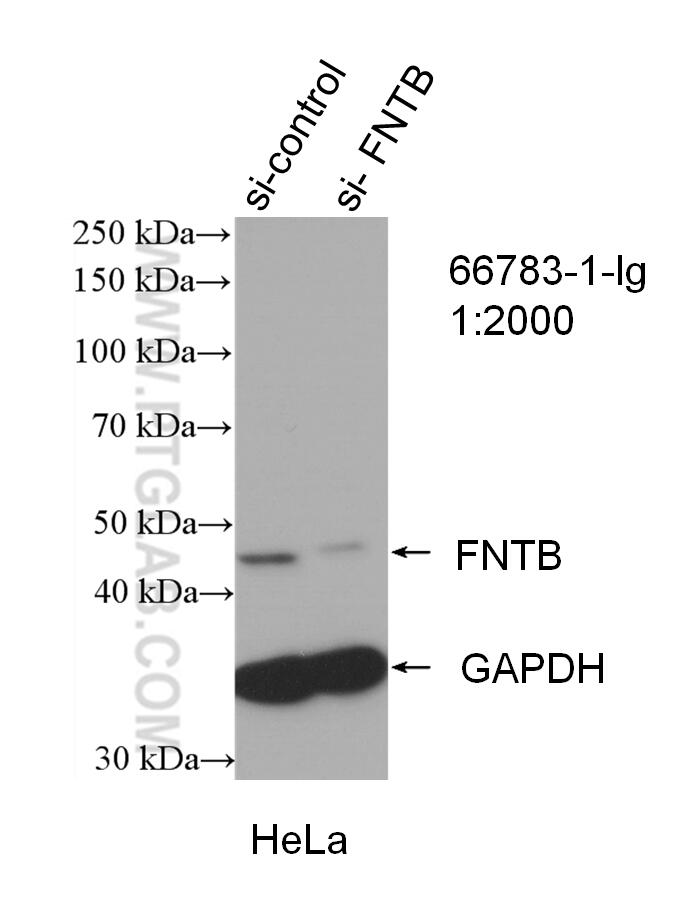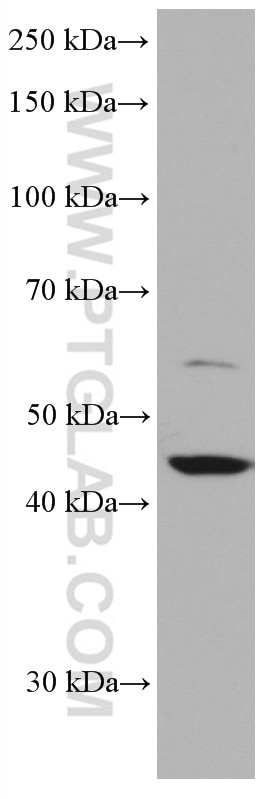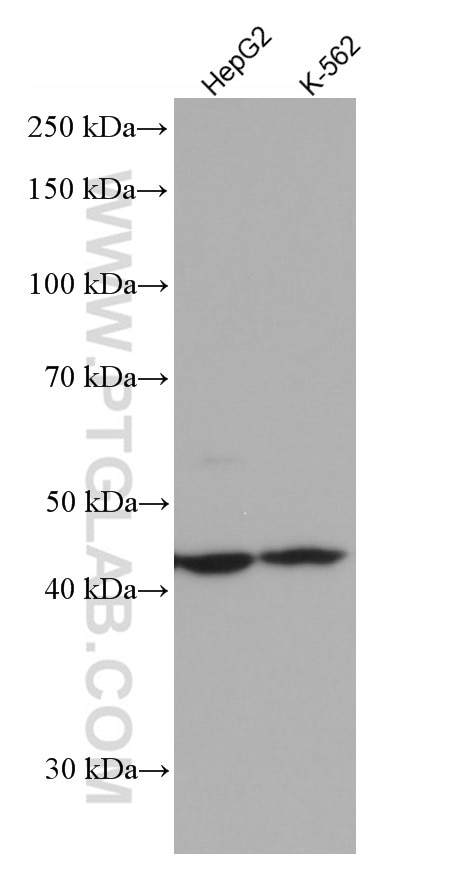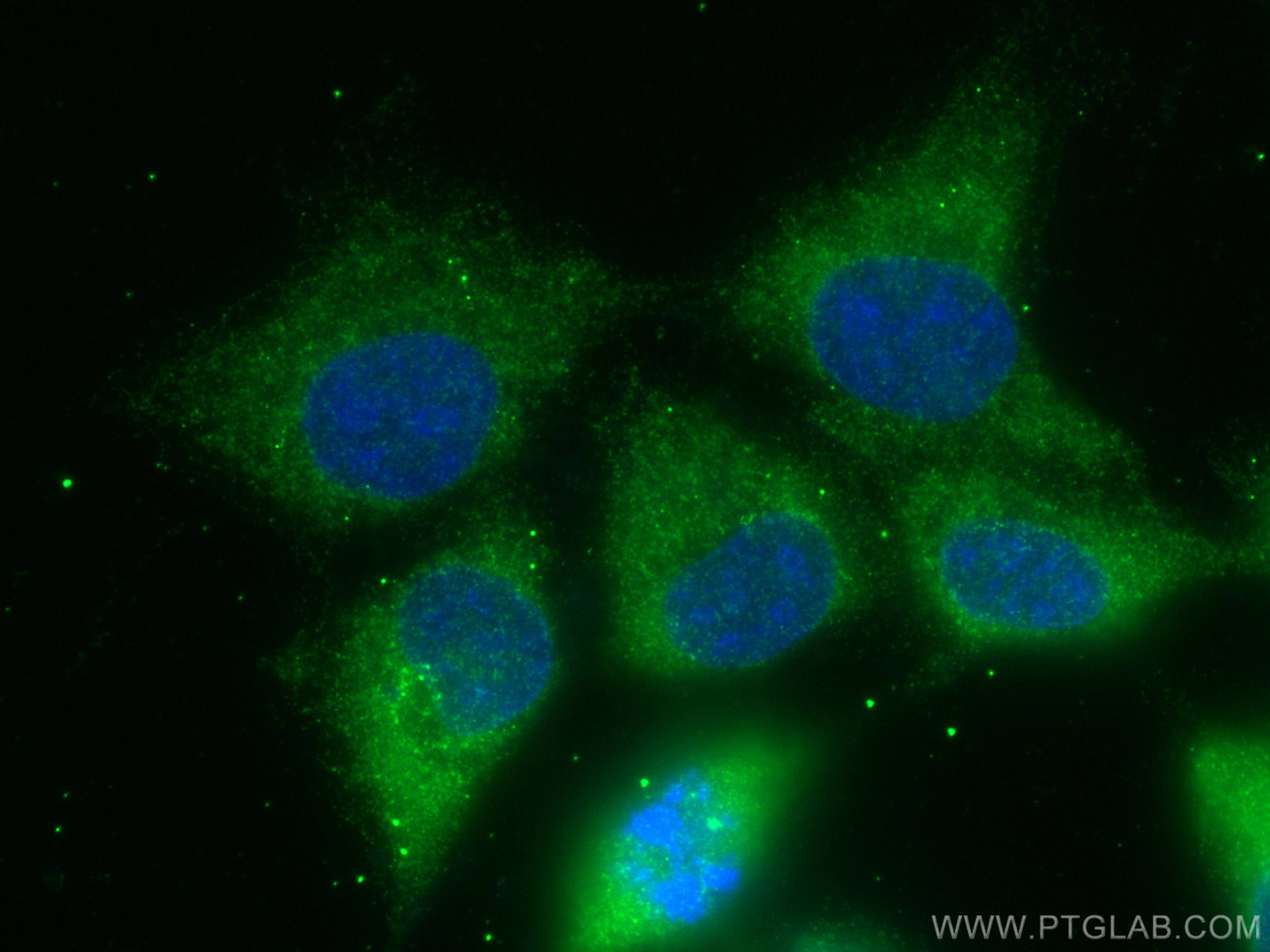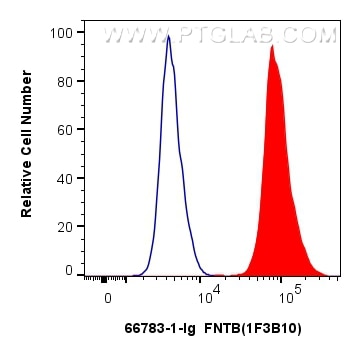Tested Applications
| Positive WB detected in | NIH/3T3 cells, HEK-293 cells, HepG2 cells, HeLa cells, K-562 cells, 4T1 cells |
| Positive IF/ICC detected in | A431 cells |
| Positive FC (Intra) detected in | A431 cells |
Recommended dilution
| Application | Dilution |
|---|---|
| Western Blot (WB) | WB : 1:1000-1:4000 |
| Immunofluorescence (IF)/ICC | IF/ICC : 1:400-1:1600 |
| Flow Cytometry (FC) (INTRA) | FC (INTRA) : 0.80 ug per 10^6 cells in a 100 µl suspension |
| It is recommended that this reagent should be titrated in each testing system to obtain optimal results. | |
| Sample-dependent, Check data in validation data gallery. | |
Product Information
66783-1-Ig targets FNTB in WB, IF/ICC, FC (Intra), ELISA applications and shows reactivity with human, mouse samples.
| Tested Reactivity | human, mouse |
| Host / Isotype | Mouse / IgG1 |
| Class | Monoclonal |
| Type | Antibody |
| Immunogen |
CatNo: Ag27796 Product name: Recombinant human FNTB protein Source: e coli.-derived, PET28a Tag: 6*His Domain: 1-356 aa of BC020232 Sequence: MASPSSFTYYCPPSSSPVWSEPLYSLRPEHARERLQDDSVETVTSIEQAKVEEKIQEVFSSYKFNHLVPRLVLQREKHFHYLKRGLRQLTDAYECLDASRPWLCYWILHSLELLDEPIPQIVATDVCQFLELCQSPEGGFGGGPGQYPHLAPTYAAVNALCIIGTEEAYDIINREKLLQYLYSLKQPDGSFLMHVGGEVDVRSAYCAASVASLTNIITPDLFEGTAEWIARCQNWEGGIGGVPGMEAHGGYTFCGLAALVILKRERSLNLKSLLQWVTSRQMRFEGGFQGRCNKLVDGCYSFWQAGLLPLLHRALHAQGDPALSMSHWMFHQQALQEYILMCCQCPAGGLLDKPGK Predict reactive species |
| Full Name | farnesyltransferase, CAAX box, beta |
| Calculated Molecular Weight | 437 aa, 49 kDa |
| Observed Molecular Weight | 44-45 kDa |
| GenBank Accession Number | BC020232 |
| Gene Symbol | FNTB |
| Gene ID (NCBI) | 2342 |
| RRID | AB_2882128 |
| Conjugate | Unconjugated |
| Form | Liquid |
| Purification Method | Protein G purification |
| UNIPROT ID | P49356 |
| Storage Buffer | PBS with 0.02% sodium azide and 50% glycerol, pH 7.3. |
| Storage Conditions | Store at -20°C. Stable for one year after shipment. Aliquoting is unnecessary for -20oC storage. 20ul sizes contain 0.1% BSA. |
Background Information
FNTB is the catalytic β subunit of farnesyltransferase which is an alpha/beta heterodimeric enzyme attaching a farnesyl group to a single cysteine in several cellular proteins like RAS and facilitating their translocation from the cytoplasm to the plasma membrane. Farnesyltransferase inhibitors have been developed as ant-tumor agents. FNTB is required for the homeostasis of skin keratinocytes.
Protocols
| Product Specific Protocols | |
|---|---|
| FC protocol for FNTB antibody 66783-1-Ig | Download protocol |
| IF protocol for FNTB antibody 66783-1-Ig | Download protocol |
| WB protocol for FNTB antibody 66783-1-Ig | Download protocol |
| Standard Protocols | |
|---|---|
| Click here to view our Standard Protocols |

